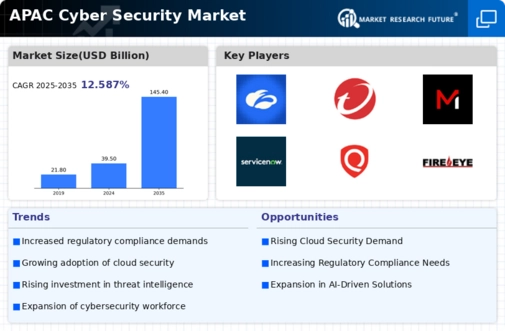China : Rapid Growth and Innovation Hub
Key markets include Beijing, Shanghai, and Shenzhen, where tech giants and startups thrive. The competitive landscape features major players like Palo Alto Networks and Fortinet, alongside local firms. The business environment is dynamic, with a focus on sectors such as finance, healthcare, and e-commerce. Local enterprises are increasingly adopting AI-driven security solutions to combat sophisticated cyber threats.
India : Strong Demand and Investment Growth
Key markets include Bengaluru, Hyderabad, and Mumbai, where a vibrant tech ecosystem fosters innovation. Major players like Cisco and McAfee have a significant presence, competing with local startups. The business environment is characterized by a growing focus on fintech, e-commerce, and IT services, with companies increasingly investing in cybersecurity to safeguard their digital assets.
Japan : Innovation and Compliance Focus
Tokyo and Osaka are key markets, hosting numerous tech firms and startups. The competitive landscape includes major players like Trend Micro and Cisco, alongside local innovators. The business environment is stable, with a focus on sectors such as manufacturing, finance, and healthcare, where cybersecurity is critical for operational integrity and customer trust.
South Korea : Government Support and Innovation
Seoul and Busan are pivotal markets, with a thriving tech ecosystem that includes major players like CrowdStrike and Check Point. The competitive landscape is dynamic, with local firms innovating in AI and machine learning for cybersecurity. The business environment is favorable, particularly in sectors such as telecommunications, finance, and public services, where cybersecurity is paramount.
Malaysia : Investment in Digital Security
Kuala Lumpur and Penang are key markets, with a mix of local and international players like Fortinet and Sophos. The competitive landscape is evolving, with local startups emerging to address specific cybersecurity needs. The business environment is improving, with a focus on digital transformation and the adoption of cloud services, necessitating enhanced cybersecurity measures.
Thailand : Focus on Compliance and Protection
Bangkok is the primary market, hosting a mix of local and international cybersecurity firms. Major players like McAfee and Cisco have a significant presence, competing with local companies. The business environment is becoming more favorable, with a growing emphasis on digital transformation and the need for robust cybersecurity measures across various sectors.
Indonesia : Growing Demand and Investment
Jakarta is the key market, with a growing number of local and international players like Fortinet and Bitdefender. The competitive landscape is evolving, with local startups addressing specific cybersecurity challenges. The business environment is improving, with a focus on digital transformation and the adoption of cloud services, necessitating enhanced cybersecurity measures.
Rest of APAC : Diverse Needs and Solutions
Key markets include Vietnam, Philippines, and Singapore, each with unique cybersecurity challenges. The competitive landscape features a mix of local and international players, with firms like FireEye and Sophos establishing a presence. The business environment varies, with some countries prioritizing regulatory frameworks while others focus on capacity building and awareness initiatives.


















Leave a Comment